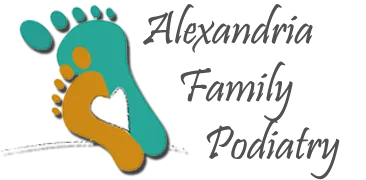“Life begins at 40,” as some would say. Yet, after this “magical age” comes a series of changes to your feet. These changes can be particularly unwelcome if you are a woman. Admittedly, people age more or less gracefully and at different speeds. Yet all will age, ultimately. What’s more, a number of factors can increase one’s chances of developing foot problems with ageing. These include: diabetes, arthritis, osteoporosis, peripheral neuropathy, flat feet, biomechanical abnormalities, obesity, shoe styles worn over the years and a history of foot injuries. Below are some of the changes your feet might go through as the wheel of time keeps turning.
Skin Changes
Your skin is one of the first structures to reflect the aging process in your foot. That’s because, as you age, your skin cells divide more and more slowly and your body produces less sweat, oil and other fatty substances. A thinning of your skin results from this, leaving the top of your foot dry and looking like a parchment. Naturally, the severity of the dryness varies from person to person, but it’s not unusual for aging skin to become so dry that it cracks. Cracked skin in your foot is more vulnerable to both bacterial and fungal infections and may cause pain with walking. Additional skin problems that may arise with aging include flakiness, itchiness, and excessive skin thickness and hardness. The thick and hard skin typically develops around the edges of your heels and can be your body’s reaction to repetitive pressure, changes in the stress placed on your foot, or a thinning of the soft tissue that normally cushions your foot. With time, you may also notice a loss of hair below your knees and on the top of your feet and toes. Areas of yellowish-brown discolorations may appear on your skin as a result of an accumulation of hemosiderin, a breakdown product of red blood cells. To maintain or recover a supple, natural-looking skin, gently exfoliate dry dead skin and moisturize. A good moisturizer should hold the water in your skin, to help compensate for your body’s decreasing ability to do so. It should also protect your skin from further drying. The best time to apply a moisturizer is right after a shower or bath, while your skin is still damp. Adding some oil to your bathwater would have the dual benefit of soothing your dry, irritated skin and further helping it retain moisture. As you shop for socks, keep in mind that nylon and rayon socks tend to contribute to skin dryness.
Fat Pad Changes
Every step you take places the equivalent of your body weight on a single foot with walking, and up to five times your body weight on that same foot with running. The fat pads located at the bottom of your feet normally act as shock absorbers for the bones, joints and other soft tissue structures they cover. As you can imagine, however, these fat pads are subject to wear and tear, given the continual pressure exercised upon them. With age, they atrophy, or lose their thickness, leaving your bones, joints and other structures without proper cushioning. This leads to inflammation in the afore-mentioned structures, which explains the common complaint of pain in the ball of the foot. This lack of cushioning and shock absorption can also result in callus formation and pain in your metatarsals, the long bones that connect your toes to the rest of your foot. Given that walking barefoot increases the stress on your fat pad, try to wear shoes whenever you’re weight bearing. To help slow the loss of your fat pads or improve related pain, wear well-fitting, supportive shoes. In some cases, your doctor may recommend that you wear custom-made orthotics, for maximum effectiveness and comfort. Keeping the skin on the ball of your feet soft and supple would also help minimize any discomfort associated with fat pad loss. Again, try to develop the habit of gently exfoliating and moisturizing your skin.Arch Height Changes
Along with the fat pad, the normal arch acts as a shock absorber for your body when you are walking, running, or jumping. In the absence of any shock absorber, the continual stress from your body weight would such that the bones of your feet would ultimately fracture or dislocate. With age, the different structures that maintain your foot’s arch at its optimum height grow weaker and thinner. As a result, the arch progressively falls, causing the foot to flatten, or collapse. Because a collapsed foot does not work as a shock absorber, it is commonly associated with pain in the foot, knee, hip, and lower back. Not surprisingly, prevention and self-treatment for a fallen arch are similar to those for fat pad loss. Instead of walking barefoot, always support the arches of your feet with well-fitting shoes that provide stability. You may even prefer custom made orthotics, or your doctor may prescribe them, since they’re built to support the specific bones and joints which constitute your foot’s arch.
Toenail Changes
Your toenails undergo a series of changes as you age, often as a result of the age-related reduced blood circulation to the toes. Toenails may, for instance, thicken and/or develop ridges related to repeated minor trauma, disease or nutritional deficiencies. It’s not unusual for the shape of your toenails to change as you age. However, toenail deformities generally become more pronounced and complicated when dry, thick and hard skin develops in the nail folds and/or a fungal infection of the nail sets in. Toenail fungal infections and dry, hard skin are common, chronic complaints, especially among those aged 65 years or older.Fungi love dark, moist and warm environments. To help prevent nail fungus and other toenail problems, keep your feet clean, dry and moisturized. Ensure, however, that the spaces in-between your toes are dry but not moisturized. Rotating your shoes and changing your socks daily should also be beneficial. Another important aspect of prevention is to clip your toenails straight across, avoiding creating round edges. As you do so, keep your toenail cuticles intact, because they act as a barrier against germs.
Muscle & Soft Tissue Changes
With time, your lower extremity progressively loses muscle mass and soft tissue density. This leads to a decrease or lack of physical activity, which in turn increases the likelihood of foot injury. Indeed, as you age, even minor trauma can lead to a fracture and a significant limitation of activity. As an illustration, the loss of muscle mass of foot bones known as interossei is a triggering factor for the development of hammertoes, the falling down of metatarsal bones, as well as the thinning and displacement of the plantar fat pad. Peripheral vascular disease and arterial insufficiency can also cause toenail changes and lead to rest pain, calf pain with activity, coldness and skin color variations. There may, on occasion, be a loss of sensation and other changes related to neuropathy. As the muscles, ligaments and tendons in your foot lose strength and power, they are no longer able to maintain your bones and joints in their proper alignment. As a result, your feet increase in length and width. You may also develop crooked toes and fit. For the proper fit, have your feet measured whenever you shop for shoes and always make your purchase at the end of the day, when your feet tend to be most swollen. The right shoe for you should fit from the moment you try it on and should have a toe box wide enough to allow your toes to comfortably wiggle. To avoid aggravating such problems as hammertoes, corns, bunions or arthritis of the toes, opt for shoes with a deep and wide toe box, and which accommodate the shape of your foot.
While many of these changes are not always welcome, they are normal. But if the changes you experience are causing you any pain or discomfort, by all means, visit your physician to have a complete foot exam.




